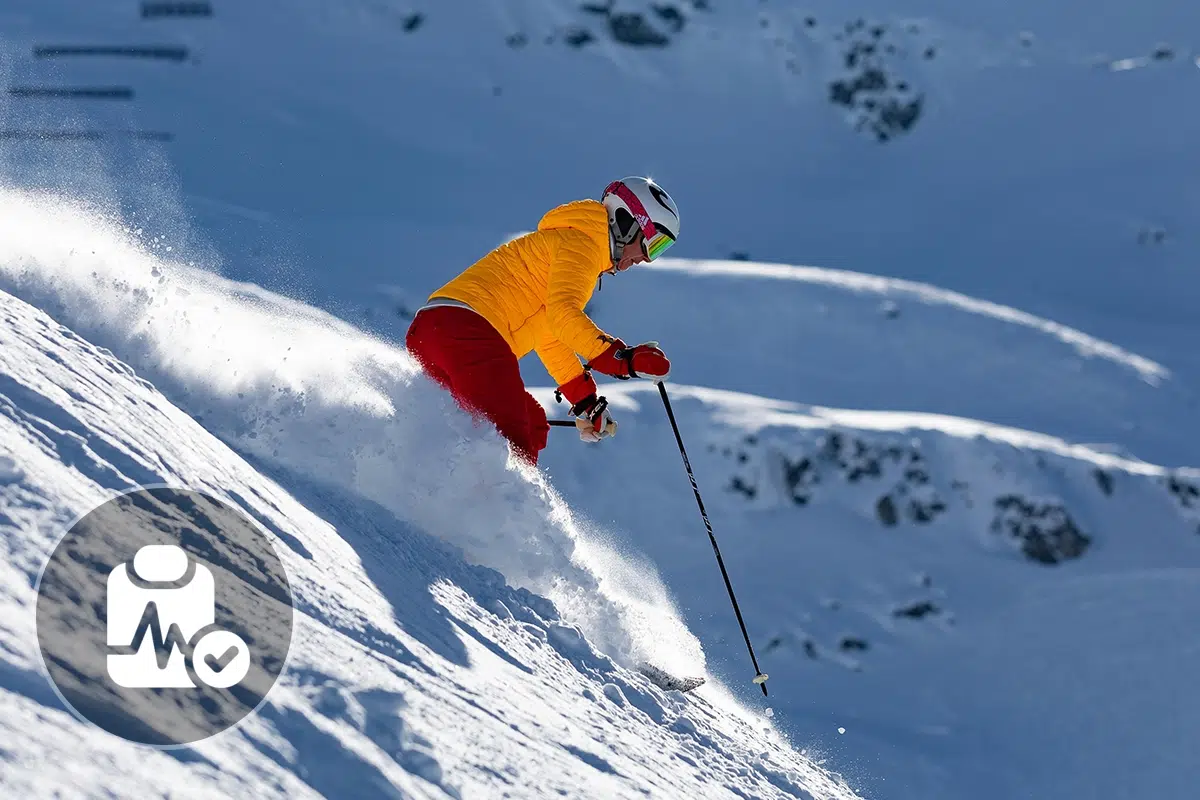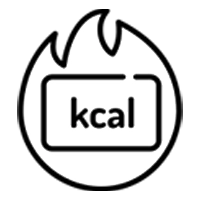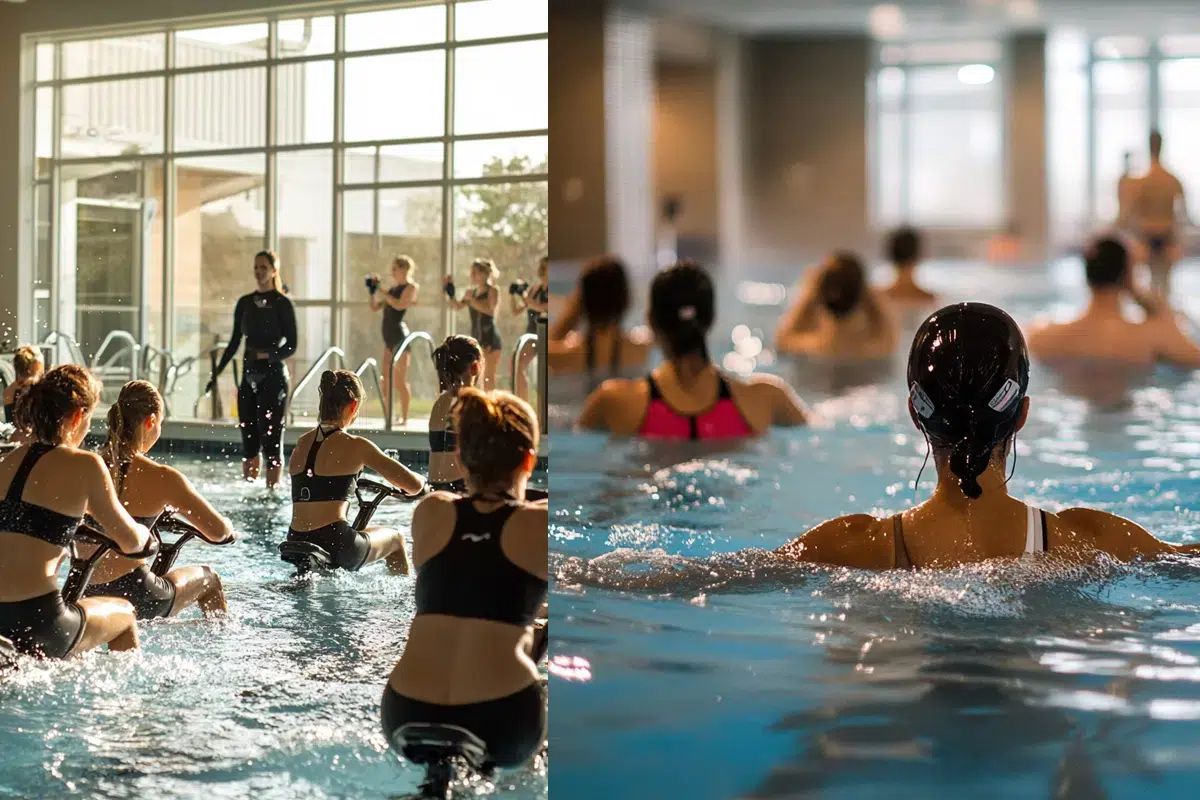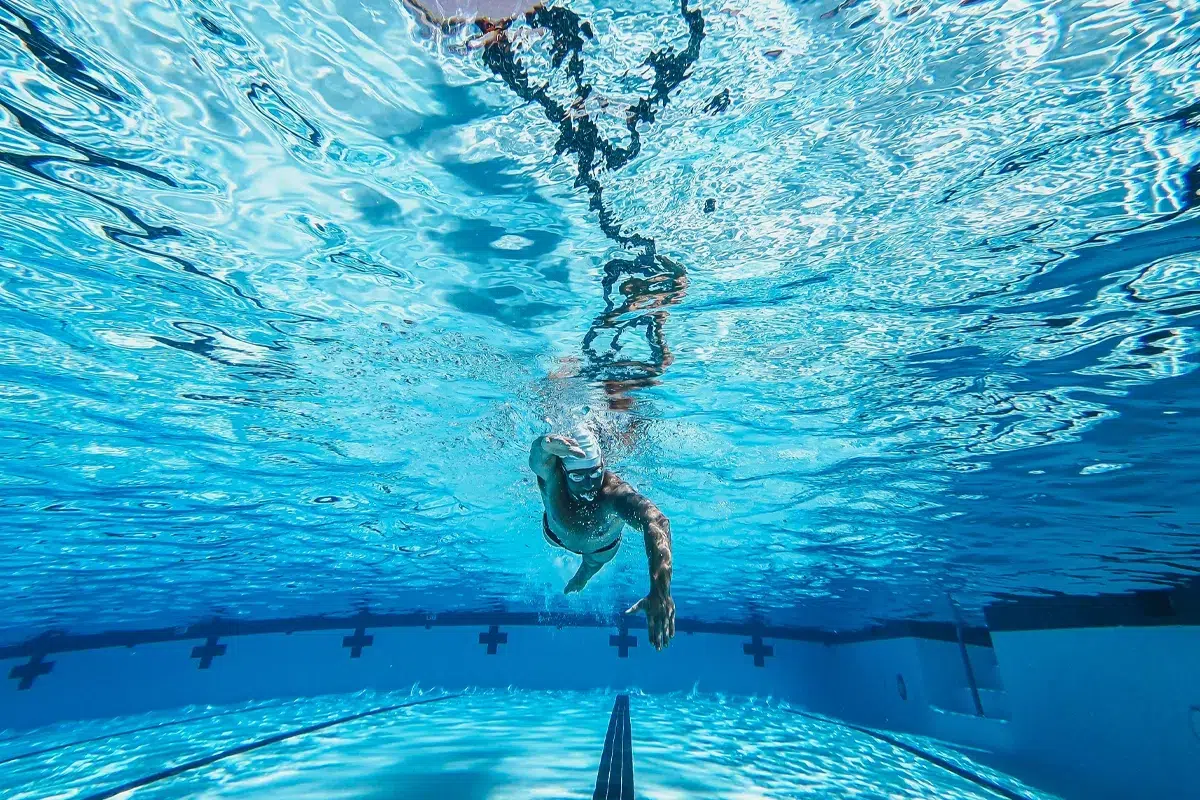Show summary Hide summary
What are the health benefits of downhill skiing?

All you need to know about downhill skiing
What are the health benefits of alpine skiing or downhill skiing? Use the tool below to find out all the benefits of downhill skiing and discover whether this sport meets your goals and expectations.
More information on downhill skiing
Is downhill skiing good for your health? Is it a good sport that is accessible to everyone? Whether you’re a beginner or an experienced skier, you’ll find a list below of the benefits and problems you may encounter when practising downhill skiing.

What is downhill skiing?
Downhill skiing is a snow sport in which the aim is to get down a snow-covered slope as quickly as possible. It is practised using skis fully attached to specific boots and poles to maintain balance.
It originated in Scandinavia just over 3,000 years ago. Accessible from a very young age, this outdoor sport offers many physical and psychological benefits. From beginners to experts, there’s something for everyone, especially as it covers several different disciplines (downhill, slalom, giant slalom, super-G, combined and freestyle).
Benefits and advantages
Alpine skiing is an invigorating sport with many benefits. Here are just a few of them:
- Alpine skiing improves balance, agility and coordination
- Downhill skiing gives you a feeling of freedom and well-being
- Alpine skiing tones the body and helps burn fat
- Alpine skiing stimulates the immune system
- Alpine skiing improves reflexes and decision-making
Minuses, disadvantages and harmful effects
Although downhill skiing is accessible to all, it is not recommended in certain cases (respiratory insufficiency, cardiovascular problems, pregnancy, neurological or psychological disorders, children under 18 months, unbalanced diabetes, etc.).
If you are in any doubt, it is advisable to seek medical advice. In addition to the physical effort involved, this discipline is generally practised at an altitude of over 1,500 metres, which puts the body to a severe test. Fatigue, migraines, shortness of breath or lack of sleep – the shortage of oxygen can have more or less harmful consequences for your health.
The most common pathologies are muscular and tendon problems, sprains, fractures and injuries to the upper and lower limbs. Alpine skiing also requires a high level of physical fitness, which makes prior physical training almost compulsory. Finally, it should be noted that some people can suffer from hypothermia. So it’s important to keep well covered and hydrated.
Other winter sports: enjoy winter thrills with snow and glide sports
Winter sports are perfect for enjoying the cold season while strengthening muscles and improving balance. Discover these winter activities to stay active and healthy:
- Cross-country skiing: Improve endurance and strengthen legs on cross-country ski trails.
- Snowshoeing: Explore snowy landscapes while burning calories and strengthening your legs.
All you need to know about downhill skiing
Discover the health benefits of other sports!
All sports in detail!




















































